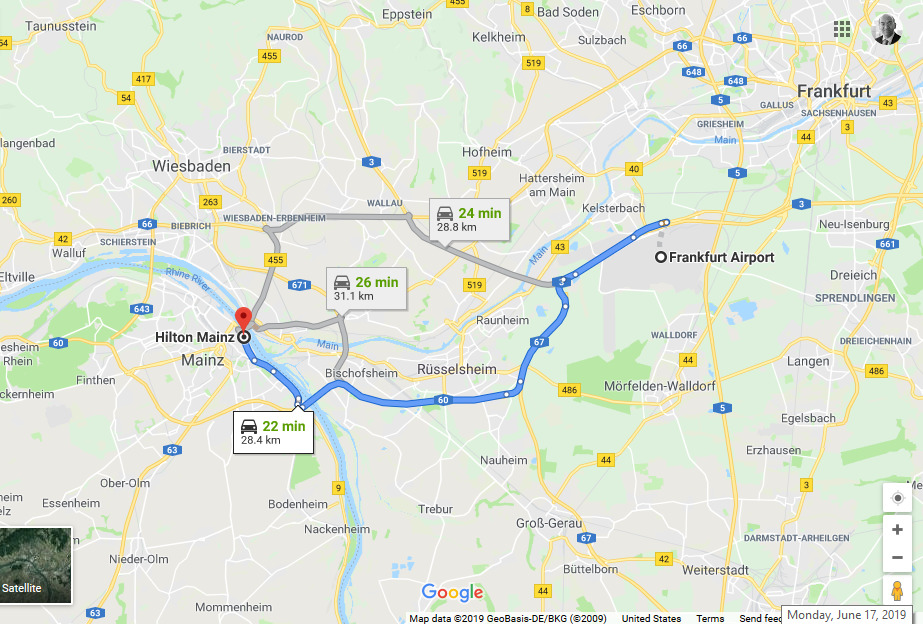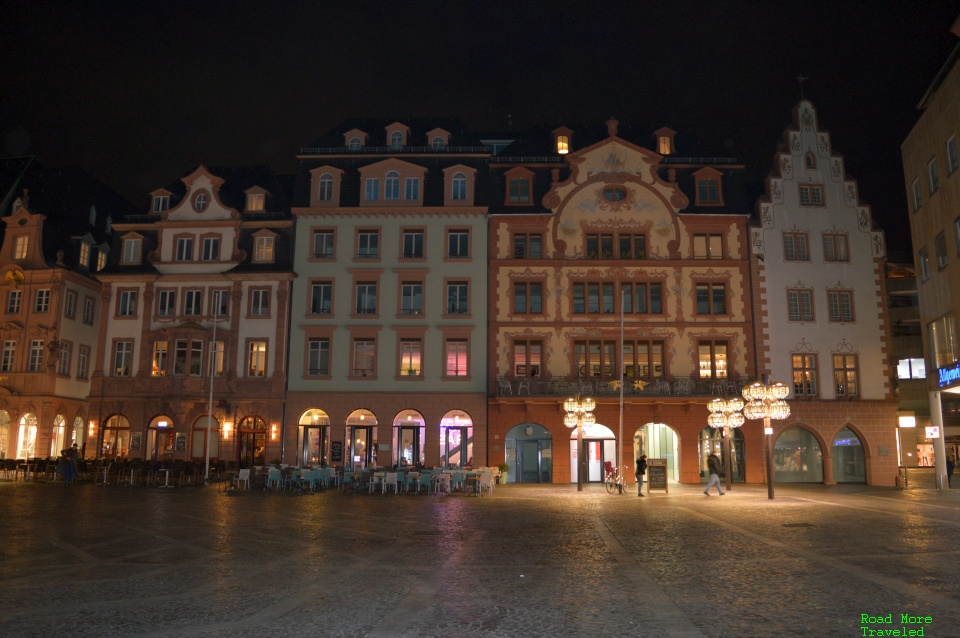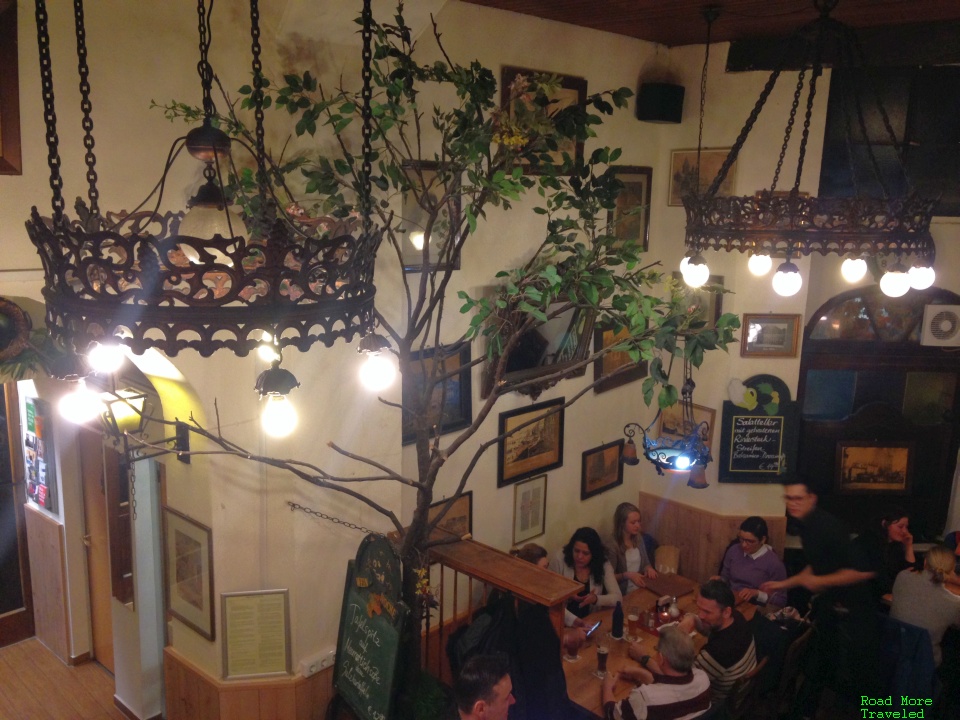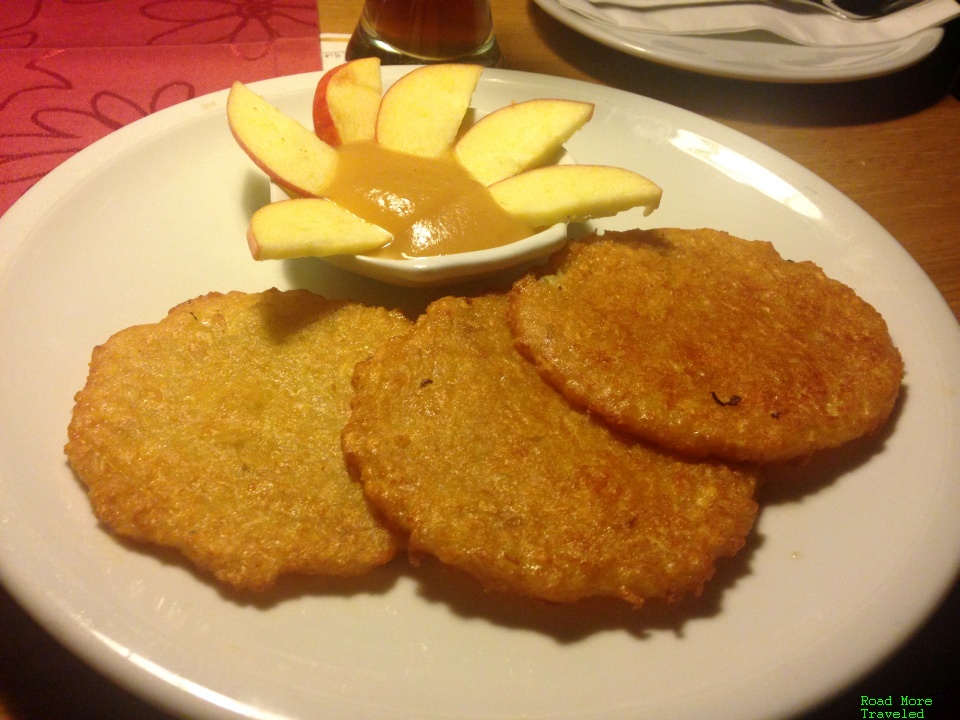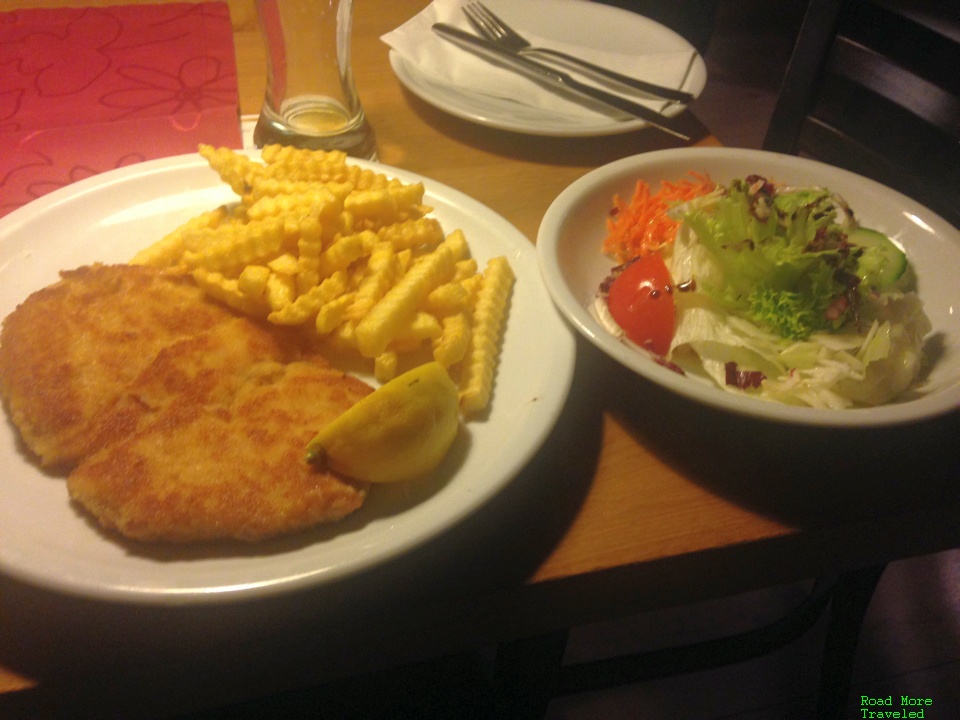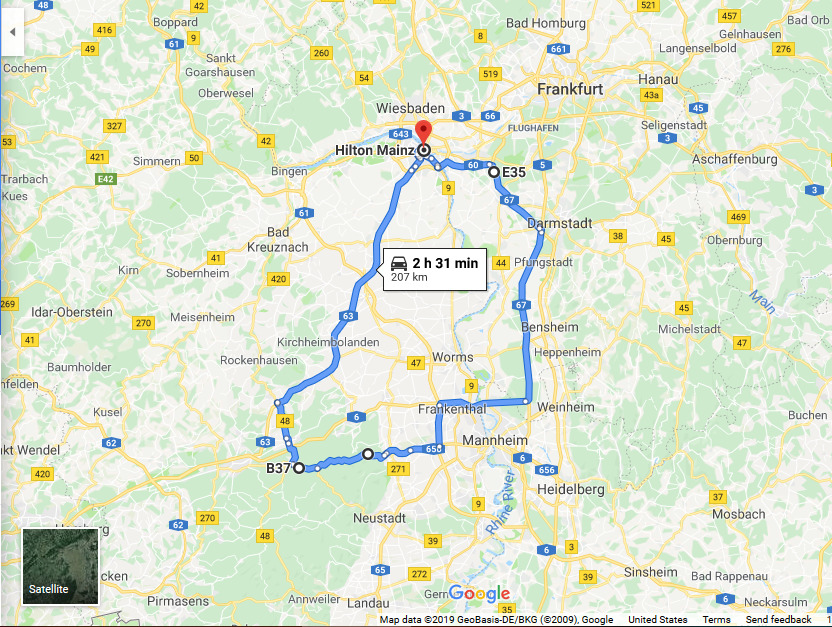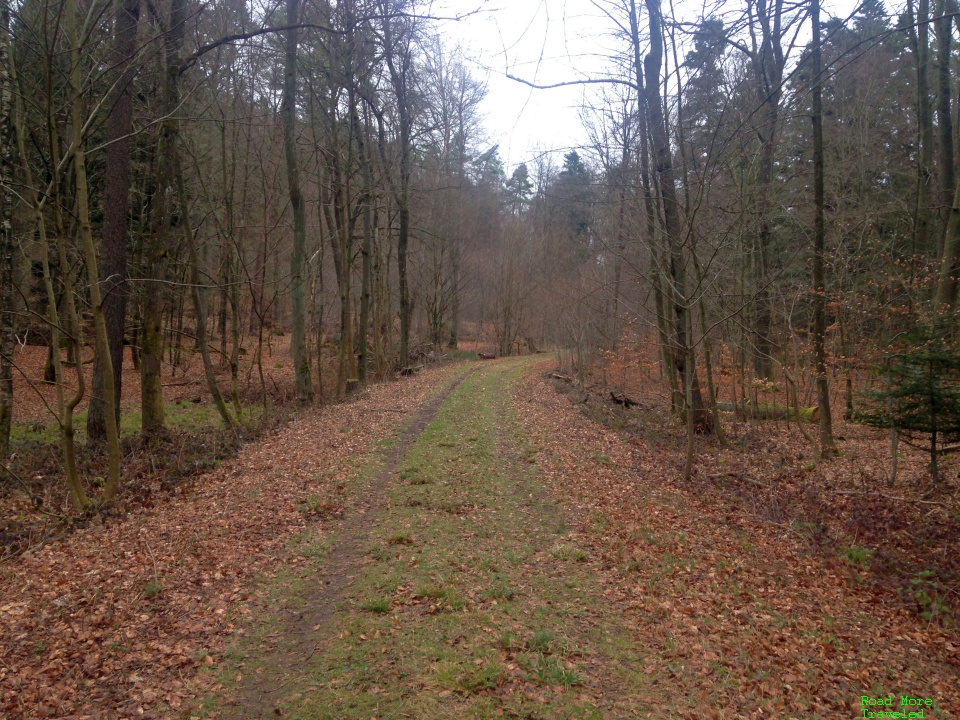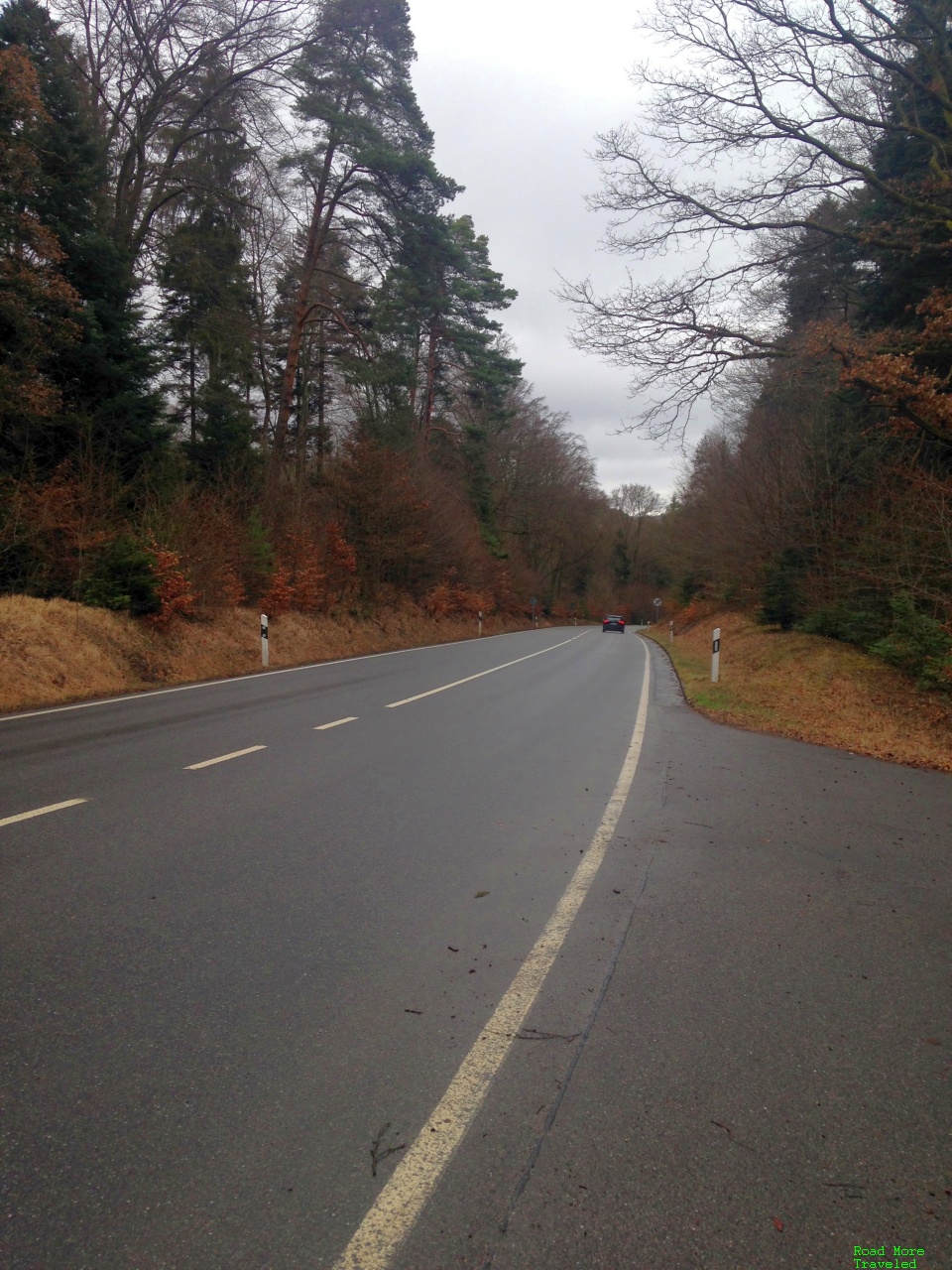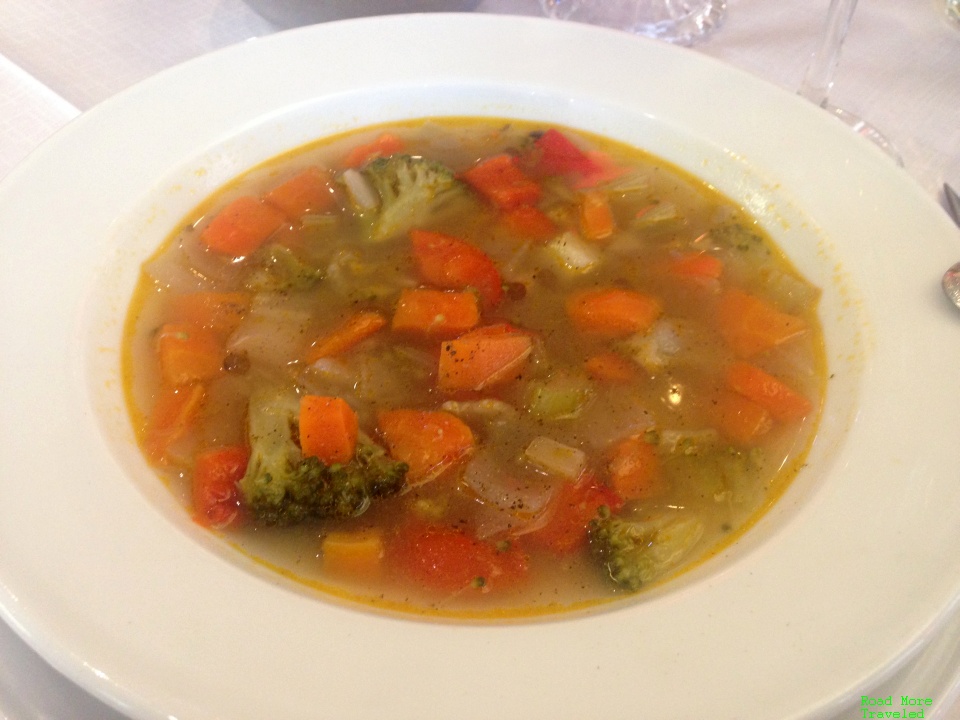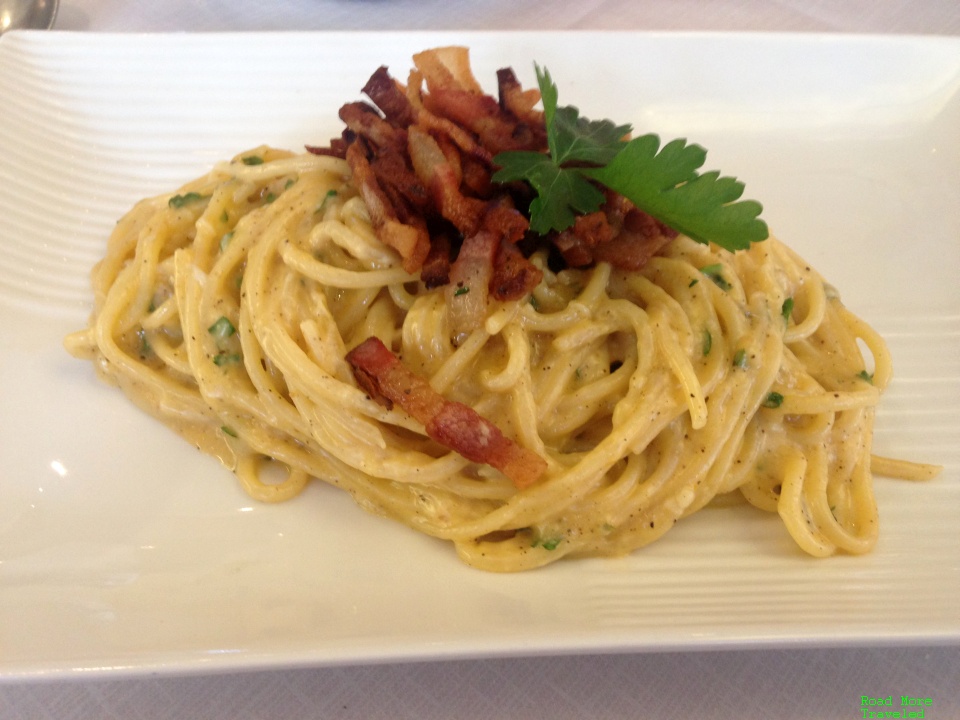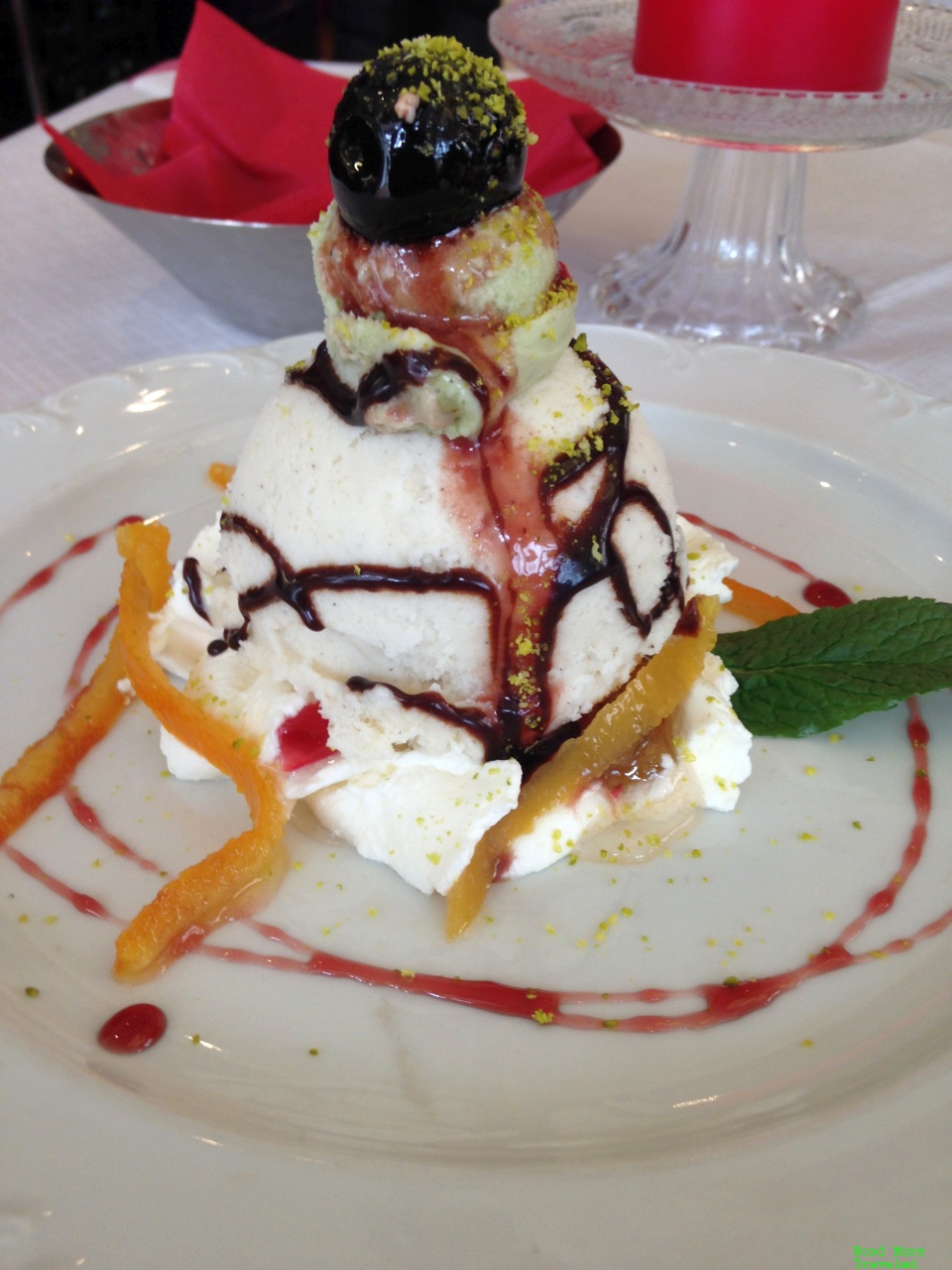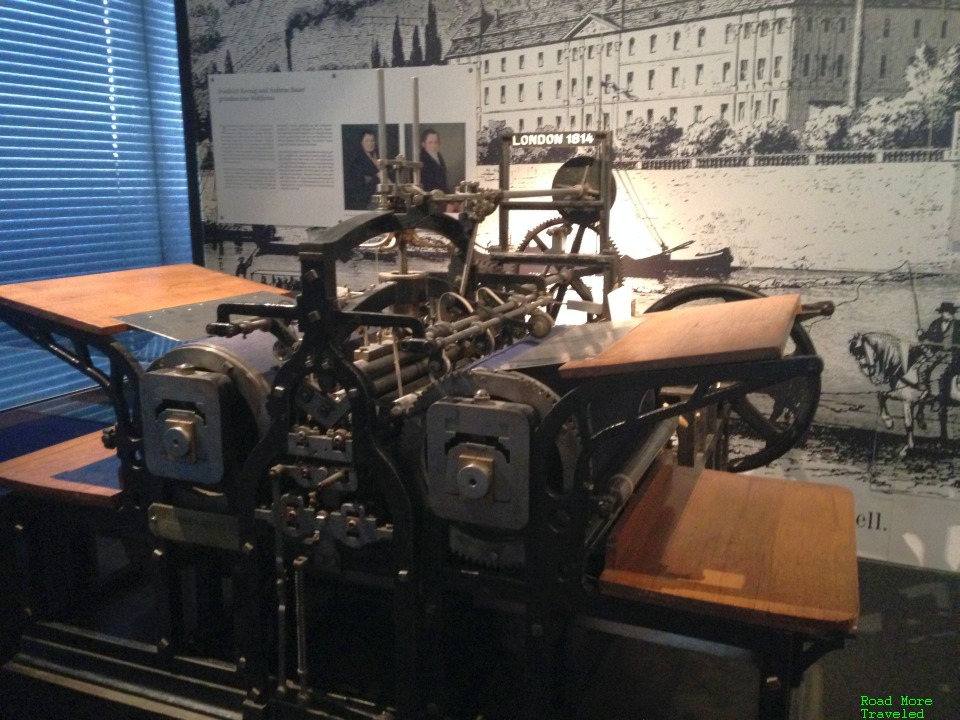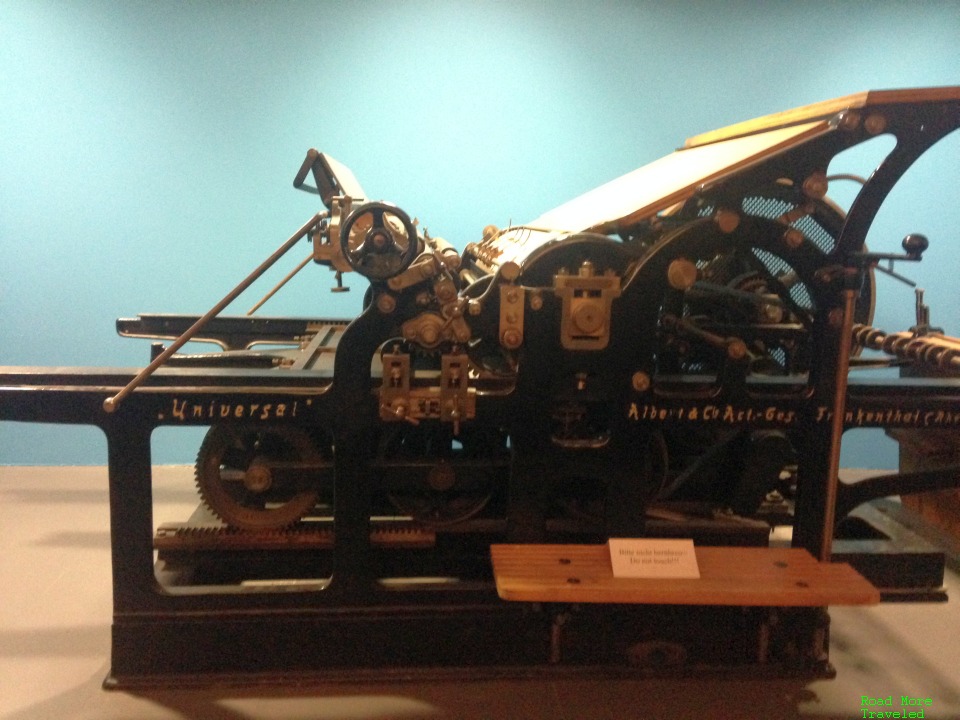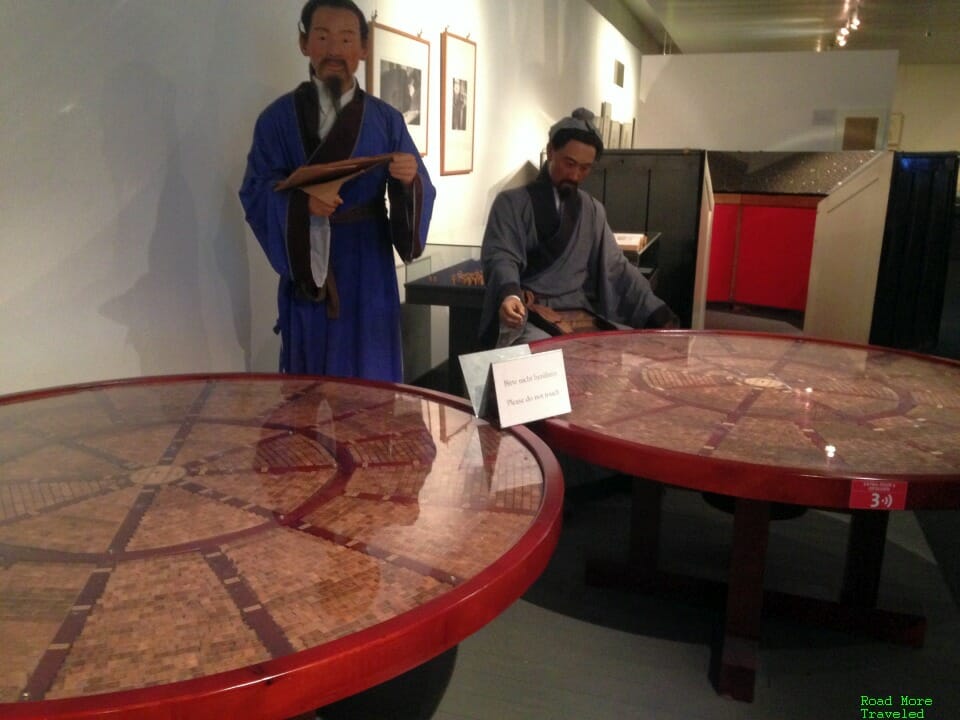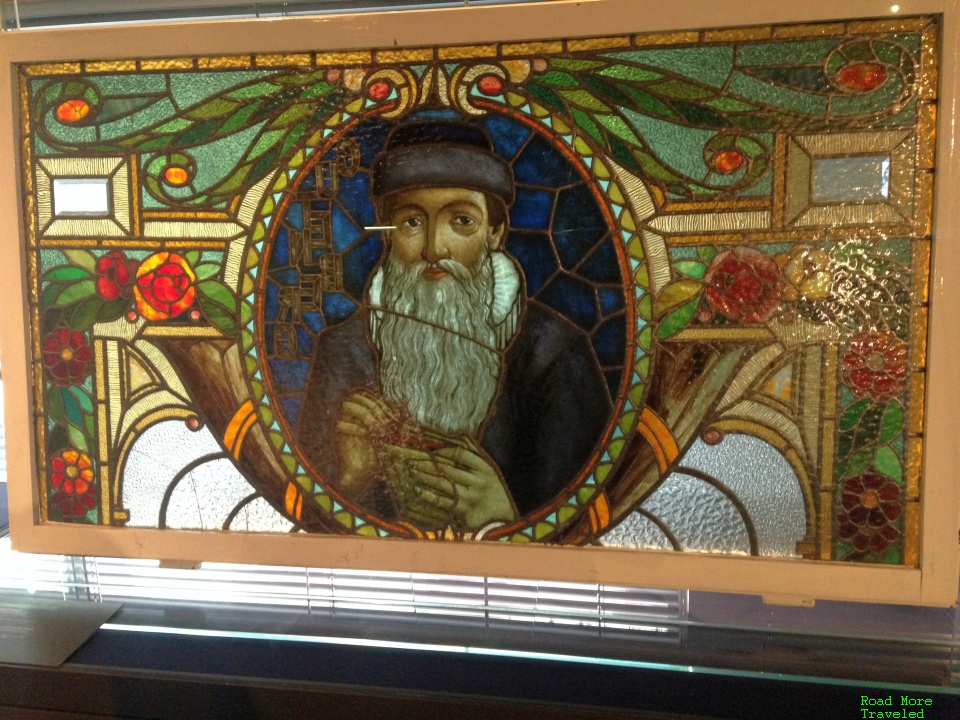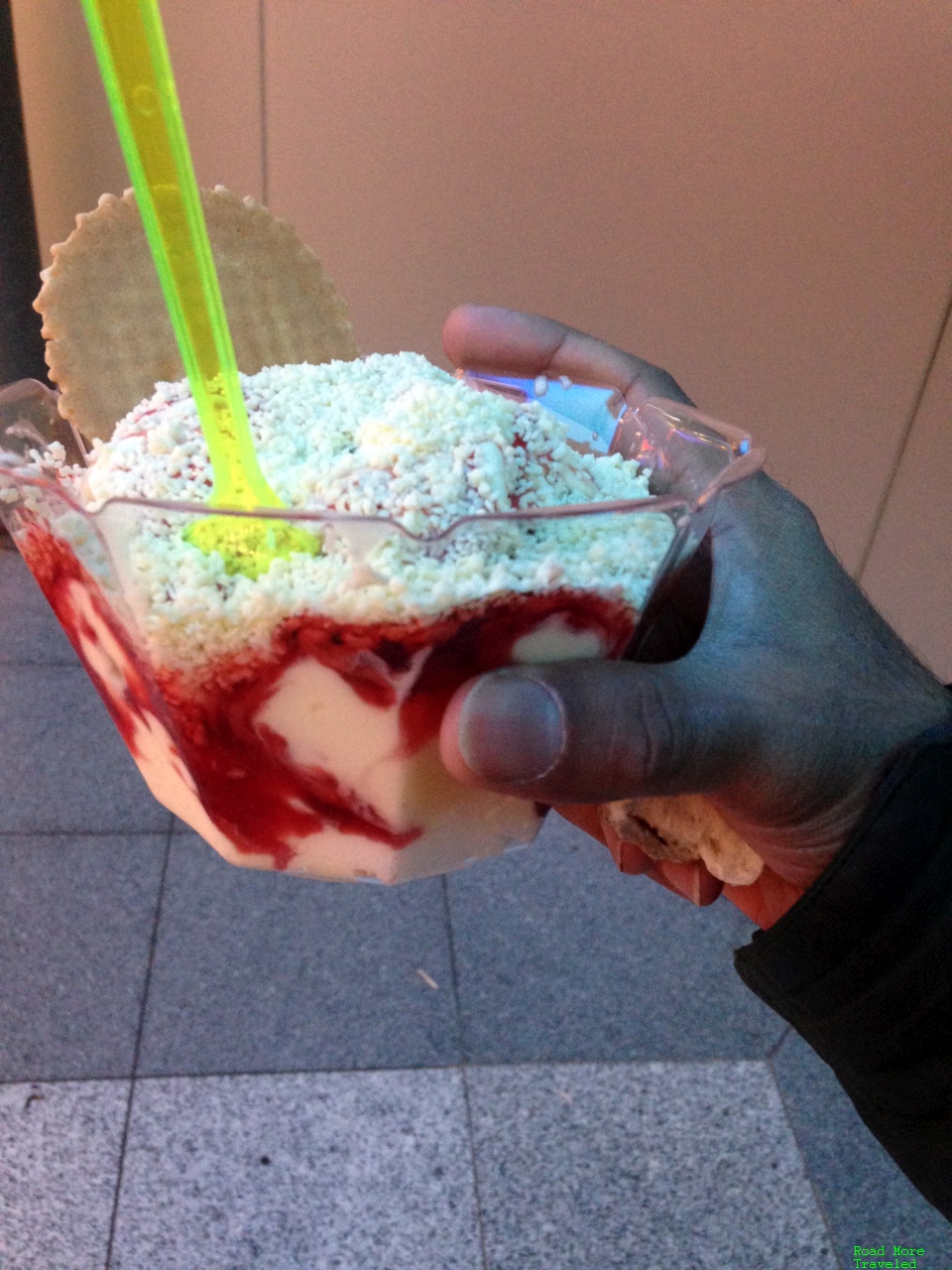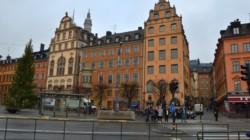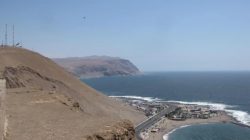This time, I decided to spend two days in Europe on my quest for a Lufthansa rubber duck. I knew I wanted to stay in Germany, but couldn’t decide quite where. My friend Matthew from Live and Let’s Fly always spoke highly of Mainz, so I decided to stay there. The medieval city’s convenient location to the Frankfurt airport made it a good choice for a short weekend. (Unlike Matthew and his wife in India, though, I definitely wasn’t a celebrity in Germany.)
Note: this post is part of my trip report covering my trip to Germany in March, 2019. Click here for the introductory post and trip report index.
Getting to Mainz
Mainz is only a short drive (about 30 km) from the Frankfurt Airport. Depending on traffic, the drive takes anywhere from 25 to 45 minutes.
I started the drive to the Hilton Mainz right at the teeth of Friday rush hour (5 pm); it did indeed take about 40 minutes via the A3, A67, and A60. There’s some gridlock at the A3/A67 and A60/A67 junctions, but otherwise, it isn’t too bad. You can also take the ICE or S-Bahn to Mainz Hauptbahnof station direct from the airport. The trip takes anywhere from 20 to 35 minutes, depending on which train you take.
So why Mainz? I didn’t want to stray far, but a place with small-town feel and easy access to Frankfurt appealed to me. The old town of Mainz and the Gutenberg Museum looked like good attractions for a short stay. Plus, some research suggested large stretches of derestricted Autobahn extending south from Mainz. I rented a car specifically for a spin on the Autobahn, so that sealed the deal.
Things to Do in Mainz
Unlike some of my whirlwind trips, I actually decided take it a little bit easy this time. Sure, I still planned to pack several things into one evening and one day. But I didn’t plan on 7 hours of trains and then walking, unlike my day trip to Brussels. My hotel’s location, directly across the road from Mainz’s historic city center, made that easy to pull off. Mainz itself is one of Germany’s oldest cities, founded by the Romans in the 1st century BC. It became an important city in the 8th century. The city is perhaps most famous as the home of Johannes Gutenberg, who invented the printing press here.
A Nighttime Perspective of Old Town
I arrived at my hotel about a quarter to 6, and after a call back home, still had plenty of night remaining. Sitting on my room was a surefire guarantee of going straight to sleep, and getting up at 2 am. So I headed outside into the cool, early spring night to find dinner and look around.
The focal point of the city is the historic Marktplatz, or Market Square. At night, the central square and guildhalls are certainly impressive in the lights. And you have the place almost all to yourself for undisturbed photos.
The most notable monument in the square is a large, 13-foot tall sandstone pillar called the Heunensäule. The pillar is nearly 1,000 years old, originally designed as a support column for the Mainz Cathedral. However, the builder never used the column, and stored it inside the cathedral. In 1975, the church gave it to the city, who installed it in the adjacent Marktplatz in 1975. In the second photo, the Mainz Cathedral looms large in the background.
At the west end of the square, turn left to walk down the Augustinerstraße, the city’s main street until the 17th century. Today, it’s still the hub of Mainz’s old town, full of boutiques and restaurants along its length. One thing that immediately caught my eye – a couple of Gothic-style half-timbered buildings, often associated with German architecture.
By this time, I wanted dinner, and so I started looking for a place. Eventually, I found one of those “cellar” restaurants, a place called Augustinerkeller Mainz. This place was packed on a Friday night, but I did manage to land a seat upstairs. A good spot for people watching on a busy evening.
At one of my favorite restaurants in Dallas, a German place called Kuby’s, I often order the potato pancakes and schnitzel. So I decided to check both out in their native habitat.
Neither disappointed; in fact they both reminded me a lot of the dishes I enjoy at Kuby’s. Whether that’s an indictment of Augustinerkeller, or an endorsement of Kuby’s is an interesting question. Though I tend to believe if a German restaurant in America matches one in Germany, they both must be pretty good. Oh, and lest I forget, yes, I also enjoyed some dark beer in its native habitat as well. Tonight, I chose Benediktiner Weißbier. This beer gives off a bit of a “banana bread” aroma and taste, apparently a common trait of Hefeweizen beers. I liked the flavor, personally.
Just beware, service here is sloooooow. It took better than an hour and a half from start to finish. A common issue throughout Germany, it seems.
Anyway, with my belly full, and, ummm, more than one beer packed away, I headed back to the hotel for the night.
Driving the Autobahn
Taking a spin on the autobahn has long been a bucket list item of mine. A bucket list item I finally managed to cross off on this trip. I woke up Saturday morning to find cloudy but dry weather, so I made a run for it after breakfast. In the end, I completed a 207 km (~130 mile) loop to the south of Mainz.
Yes, it was an incredible experience, though perhaps a bit anticlimactic. I’ll explain below.
First, a common myth is that traffic constantly whizzes by at Ludicrous Speed on the left. The truth is a little less exciting. I found that most “normal” traffic on the Autobahn travels 80-90 mph. Your more “typically” faster traffic guns it to between 90 and 110. Very few drivers actually go much faster than that. In addition, even on a lower traffic day like Saturday, the Autobahnen see heavy traffic. You might manage a minute or so of Ludicrous Speed before a “slowpoke” doing 90 slows you down. So, if you’re expecting a racetrack experience, prepare to leave disappointed.
That being said, I did manage a couple of decent bursts of speed, clocking about 125 for a couple miles on the A67 north of Mannheim. If you want a good stretch for hitting Ludicrous Speed, this one’s one of the better ones. With three lanes in each direction, you have a little more open space. Ditto with the A66 between Wiesbaden and the Frankfurt Airport access road. Note that while the website I linked to earlier generally provides good information about derestricted sections, it’s not 100% accurate. I found it actually understates the number of sections without posted speed limits. For example, both the A60 and A66 between the airport and Mainz and Wiesbaden have no posted limits. The guide, however, suggests they do. So keep an eye on the signs if you want to put the hammer down.
As for the car I rented, I chose a BMW 428i coupe, which Sixt rented me for about €45 a day. Which brings me to a piece of advice – don’t waste your money on a supercar. Especially if you’re a first-time Autobahn driver, chances are you’ll never feel comfortable driving one at its limits. Something like the 4-Series feels much more manageable, but also easily hits the speeds you’ll realistically drive. Also, a reader asked if a US drivers license works in Germany. The answer is yes, Germany recognizes any valid US drivers license.
Anyway, no, I wasn’t crazy enough to try photographing the Autobahn while driving at Luidcrous Speed. But I did take a quick break at a little park outside the town of Frankenstein. (And yes, I planned this route just so I could say I drove through Frankenstein). Despite the gloom, a walk through these old forests was a nice change of pace from the frantic Autobahn.
A Walk Along the Riverfront
After returning to Mainz, I took a few minutes to explore the riverfront before heading to lunch. Mainz sits at the confluence of the Rhine and Main Rivers, with the larger Rhine splitting the city in two. From the city center, the river provides a view of the Theodor-Heuss Bridge and the Museum Castellum. The museum chronicles the city’s 2,000 year history, and looks well worth a visit. Unfortunately, it’s only open from 10:30-12:30 on Sundays, so I couldn’t visit this time.
Meanwhile, next door to the Hilton is the “Hiltonbrunnen”, a fountain dedicated to Mainz’s medieval history. The fountain doesn’t operate in winter, but you can see the sculptures showcasing the city’s various coats-of-arms.
The Mainz Farmer’s Market and Augustinerstraße by Day
From the riverfront, I headed back in the direction of the Marktplatz. To my surprise, I found a bustling farmer’s market still in progress. The Mainz Farmer’s Market takes place from 7 am to 2 pm on Tuesdays, Fridays, and Saturdays. As it has for nearly a thousand years, the Market uses the Marktplatz for its venue. If you’re staying somewhere with a kitchen, check it out for fresh fruits, vegetables, meats, breads, cheeses, wines, and more.
There’s even a laying hen, if you fancy your eggs really, really fresh.
I didn’t buy anything, but walking through an old school European Farmer’s Market was a very cool experience.
After spending a few minutes here, I headed back down the Augustinerstraße for a stroll before lunch. It’s certainly a very different vibe compared to nighttime. Unlike Amsterdam or Brussels, though, Mainz never felt crowded, even on a Saturday afternoon. That makes the Augustinerstraße an ideal street for people watching and admiring the classic architecture. (Note: although most buildings here maintain their classic looks, much of what you see today is actually restored. Bombings during World War II severely damaged or destroyed many of Mainz’s historic structures.)
I then headed to a quiet, residential section of Old Town, eventually reaching the Parish of St. Ignatius. The red sandstone church, completed in 1774, is a unique cross between Baroque and Neoclassical architectural styles.
An Italian Lunch In Search of Spaghettieis
Besides schnitzel and beer, what I really wanted to try in Mainz was spaghettieis, a popular German ice cream dessert. Contrary to the name, spaghettieis doesn’t actually contain any pasta. It’s ice cream run through a machine to look like spaghetti, then topped with strawberry sauce and chocolate sprinkles to resemble marinara sauce and cheese. I asked Matthew for his recommendation of a place to find it, and he suggested DaVito, an Italian restaurant on Augustinerstraße. The minestrone and spaghetti carbonara were pretty good.
Unfortunately, though, I struck out on the spaghettieis; it wasn’t available that day. I did enjoy the house specialty, the cassata, however.
My only complaint – it’s a little pricey. The above meal set me back about €27.
A Visit to the Gutenberg Museum
No visit to Mainz is complete without a visit to the museum celebrating its most famous resident, Johannes Gutenberg. The Gutenberg Museum serves a dual purpose – chronicling the development of the printing press, and the history of bookmaking before the press. Needless to say, early printing presses certainly were enormous.
As mentioned, the museum also chronicles the history of bookmaking prior to the invention of the printing press. One such exhibit showed an ancient Chinese technique using wooden tabs assembled on large wheels.
And of course, there are several portraits of Gutenberg himself sprinkled throughout. Interestingly, no portraits of the secretive Gutenberg during his life actually exist. Instead, artists created the portraits you see today from imagination years after his death. Whether Gutenberg actually looked like this, nobody knows for sure.
The museum’s most notable works include two (incomplete) copies of the Gutenberg Bible. (The museum does not allow photography of the Bibles). Downstairs on the hour, a museum employee also performs a demonstration on a moveable type printing press. The presentation is in German, but it’s still an interesting demonstration to watch. If you have small children, the employee may employ one of them as a volunteer, so sit up front if your kids enjoy that kind of thing.
Another View of the Marktplatz and Mainz Cathedral
The Gutenberg Museum is just off the Marktplatz, and thus provides a good spot for exploring the square and Cathedral afterwards. I certainly enjoyed viewing the square at night, but the afternoon sunshine provided a much different perspective. You really get a sense of just how large Mainz Cathedral is as it looms over the square. Especially when seen behind the Heunensäule.
Mainz Cathedral (also called St. Martin’s Cathedral or Mainzer Dom) is one of the oldest cathedrals in Germany. Historians believe the original construction finished in 975 AD, but the current completed structure dates to the 13th or 14th century. Although Allied bombing during World War II destroyed nearly 80% of Mainz, the Cathedral remained, miraculously, virtually untouched. Thus, the Romanesque-Baroque masterpiece remains the centerpiece of the city, much as it did centuries ago. (The main bell tower, on the right in the second photo, is currently undergoing a restoration project.)
With the Farmer’s Market now packed up for the day, I took one last look at the Marktplatz before moving on.
Finding the Elusive Spaghettieis
After my afternoon walking around, I briefly headed back to the hotel. But I didn’t stay long, determined to find spaghettieis before leaving town. This time, I tried my old friend Google, which suggested Eiscafé Florenz, in the Romerpassage mall. Success! A perfect way to end the day.
Final Thoughts
Compared to the big cities I’ve visited on my last couple of European trips, Mainz provided a nice change of pace. There’s plenty to do over a couple of days, and it’s a lot less hectic as a smaller city. (And if you get bored, it’s only a short train ride to Frankfurt.) If you’re planning a trip to the Frankfurt area, and want something a little different but close to the city, add Mainz to your list.

